Live (Undeployed) Inflator Module
Caution: Refer to SIR Inflator Module Handling and Storage Caution in the Preface section.

Use caution when handling or storing a live (undeployed) inflator module. An
inflator module deployment produces a rapid generation of gas. This may cause the
inflator module, or an object in front of the inflator module, to project through
the air in the event of an unlikely deployment.
Dual Stage Inflator Module
Dual stage inflator modules have two deployment stages. If stage 1 was
used to deploy a dual stage inflator module, stage 2 may still be active.
Therefore, a deployed dual stage inflator module must be treated as an active module.
If disposal of a deployed or undeployed dual stage module is required both deployment
loops must be energized to deploy the air bag.
Scrapping Procedure
During the course of a vehicles useful life, you may need to dispose of a live
(undeployed) inflator module. Do not dispose of a live (undeployed) inflator module
through normal disposal channels until the inflator module has been deployed. The
following information covers the proper procedures for the disposing of a live (undeployed)
inflator module.
Do not deploy the inflator module in the following situations:
| • | After replacement of an inflator module under warranty. The inflator module
may need to be returned undeployed to the manufacturer. |
| • | If the vehicle is the subject of a Product Liability report related
to the SIR system and is subject to a Preliminary Investigation (GM-1241). Do not
alter the SIR system in any manner. |
| • | If the vehicle is involved in a campaign affecting the inflator modules.
Follow the instructions in the campaign service bulletin for proper SIR handling procedures. |
Deployment Procedures
The inflator module can be deployed inside or outside of the vehicle. The method
used depends upon the final disposition of the vehicle. Review the following procedures
in order to determine which will work best in a given situation:
Deployment Outside Vehicle (Steering Wheel Module, I/P Module, and Roof Rail
Module)
Deploy the inflator module outside of the vehicle when the vehicle will be returned
to service, for seat belt pretensioner deployment outside the vehicle refer to
Pretensioner Handling and Scrapping
. Situations that require deployment outside of the vehicle include
the following:
| • | Using the SIR diagnostics, determine that the inflator module is malfunctioning. |
| • | The inflator module is cosmetically damaged, scratched or ripped. |
| • | The inflator module pigtail (if equipped) is damaged. |
| • | The inflator module connector is damaged. |
| • | The inflator module connector terminals are damaged. |
Deployment and disposal of a malfunctioning inflator module is subject to any
required retention period.
Caution: Refer to SIR Inflator Module Disposal Caution in the Preface section.
Tools Required
| • | J 38826-25 Roof rail module adapter |
| • | J 38826-75 Steering wheel module adapter (dual stage air bags) |
| • | J 38826-80 I/P module adapter (dual stage air bags) |
- Turn OFF the ignition.
- Remove the ignition key.
- Put on safety glasses.
- Remove the inflator module. Refer to the following:

- Place the inflator module with the vinyl trim cover
facing up and away from the surface on a work bench.
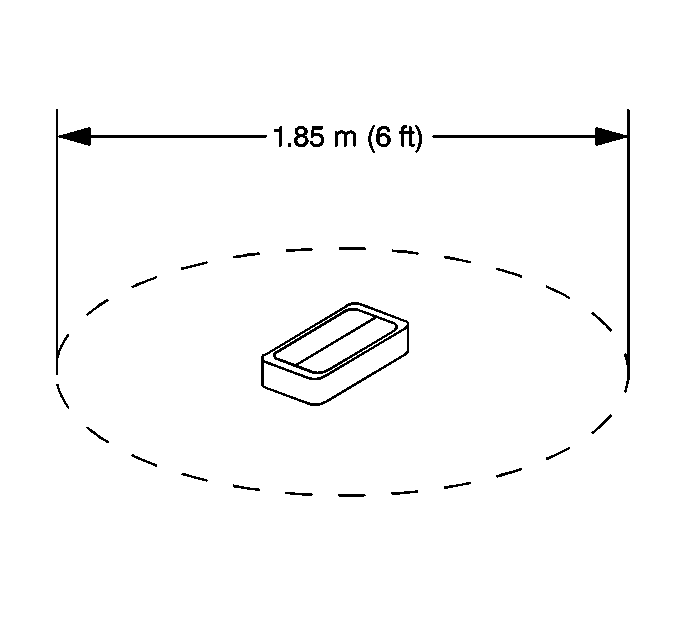
- Clear a space on the ground about 1.85 m
(6 ft) in diameter for deployment of the inflator module. If possible, use
a paved, outdoor location free of activity. Otherwise, use a space free of activity
on the shop floor. Make sure you have sufficient ventilation.
- Make sure no loose or flammable objects are in the area.
Important: Dual stage deployments are only used in steering wheel and I/P inflator modules.
If stage 1 was used to deploy a dual stage inflator module, stage 2
may still be active. If disposal of a deployed or undeployed dual stage module is
required both deployment loops must be energized to deploy the air bag.
- When deploying the steering wheel module, place the steering wheel module in
the center of the space.
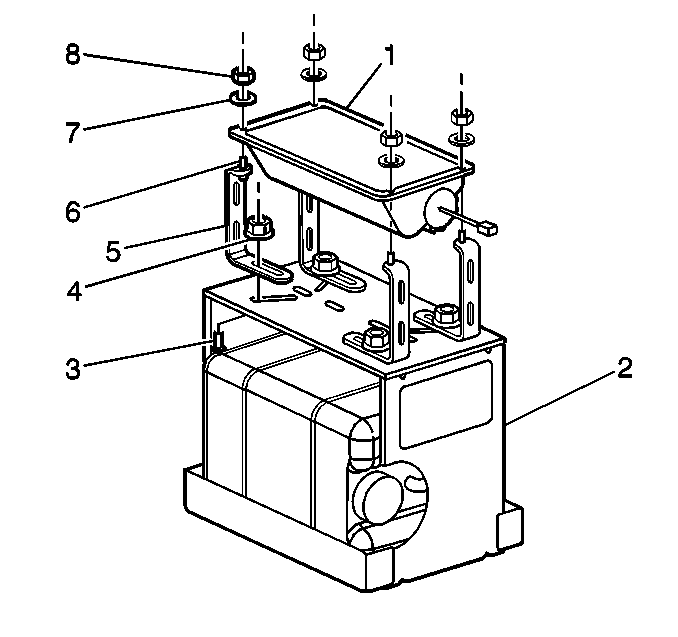
- When deploying the I/P module, refer to the following
instructions:
| 9.1. | Place J 39401-B
(2) in the
center of the cleared area. |
| 9.2. | Fill the deployment fixture with water or sand. |
| 9.3. | Using the proper nuts and bolts, mount the I/P module (1) to the
deployment fixture (2), with the vinyl trim facing up. |
| 9.4. | Securely tighten all fasteners that hold the I/P module (1) to
the deployment fixture (2) prior to deployment. |
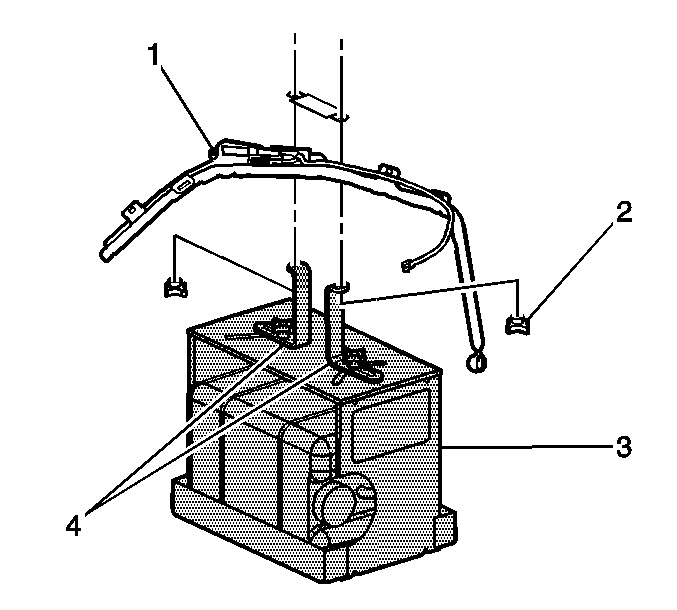
- If you have a roof rail module, refer to the
following instructions:
| • | Place the SIR deployment fixture (3) in the center of the cleared
area. |
| • | Fill the deployment fixture with water or sand. |
| • | Using the proper nuts (2) and mount the roof rail module (1)
to the deployment fixture (3), with the vinyl face up. |
| • | Adjust and secure the fixture arms (4) to the deployment fixture (3). |
| • | Securely tighten all fasteners that hold the side impact module (1)
to the deployment fixture (3) prior to deployment. |
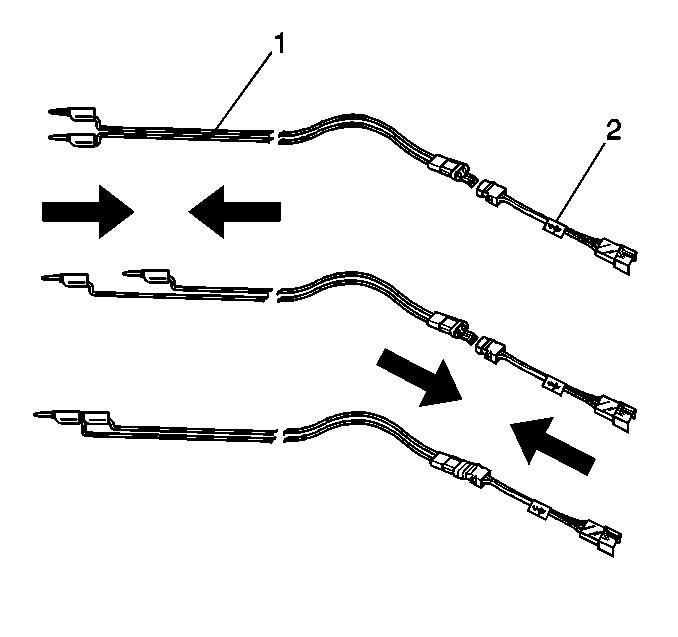
- Inspect J 38826
and the appropriate pigtail adapter for damage. Replace as needed.
- Short the two SIR deployment harness (1) leads together using one
banana plug seated into the other.
Important: Refer to Tools Required list for the correct adapter.
- Connect the appropriate pigtail adapter (2) to the SIR deployment harness (1).
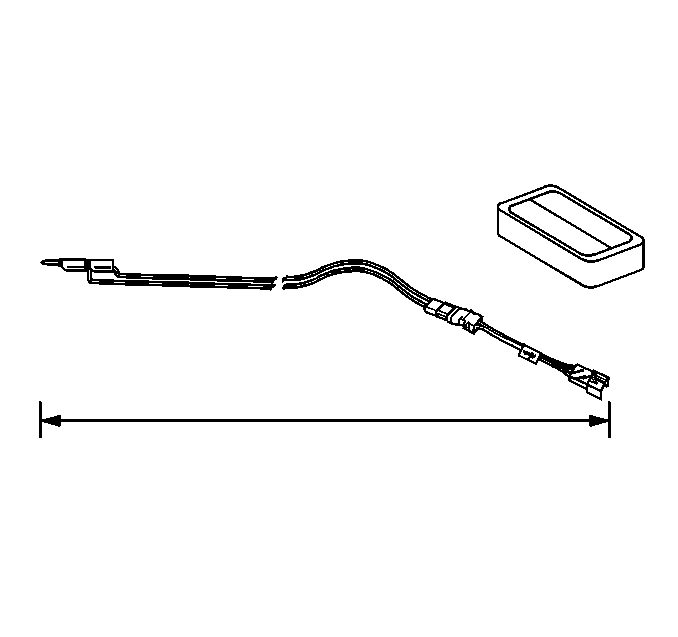
- Extend the SIR deployment harness and adapter
to full length from the deployment fixture.
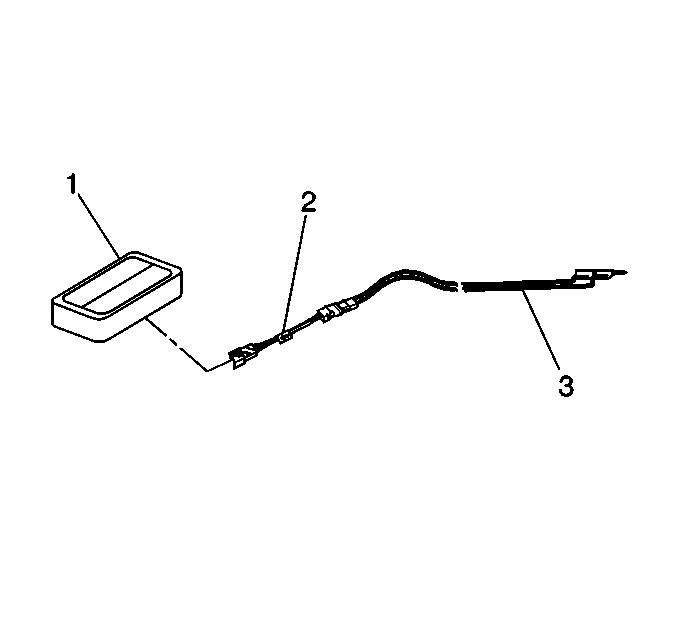
- Connect the inflator module (1) to the
adapter (2) on the SIR deployment harness (3).
Important:
| • | The rapid expansion of gas involved with deploying an inflator module
is very loud. Notify all the people in the immediate area that you intend to deploy
the inflator module. |
| • | When the inflator module deploys, the deployment fixture may jump about
30 cm (1 ft) vertically. This is a normal reaction of the inflator
module due to the force of the rapid expansion of gas inside the inflator module. |
| • | If you are deploying a dual stage inflator module with stage 1
already deployed, the fixture may not move and the noise may have been reduced. |
- Clear the area of people.

- Place a 12 V minimum/2 A minimum
power source, such as a vehicle battery, near the shorted end of the SIR deployment
harness.
- Separate the 2 banana plugs on the SIR deployment harness.

- Connect the SIR deployment harness wires to the
power source. Inflator module deployment will occur when contact is made.
- Disconnect the SIR deployment harness from the power source.
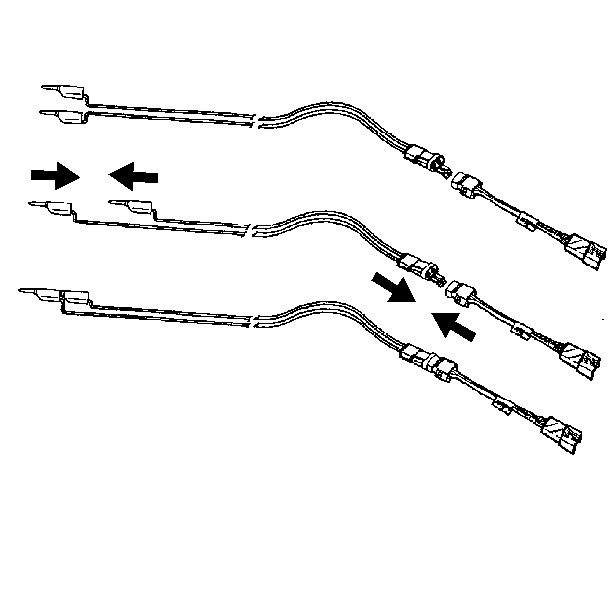
- Seat one banana plug into the other in order to
short the deployment harness leads.
- If the inflator module did not deploy, disconnect the adapter and discontinue
the procedure. Contact the Technical Assistance Group. Otherwise, proceed to the following
steps.
Caution: Refer to SIR Deployed Inflator Modules Are Hot Caution in the Preface section.
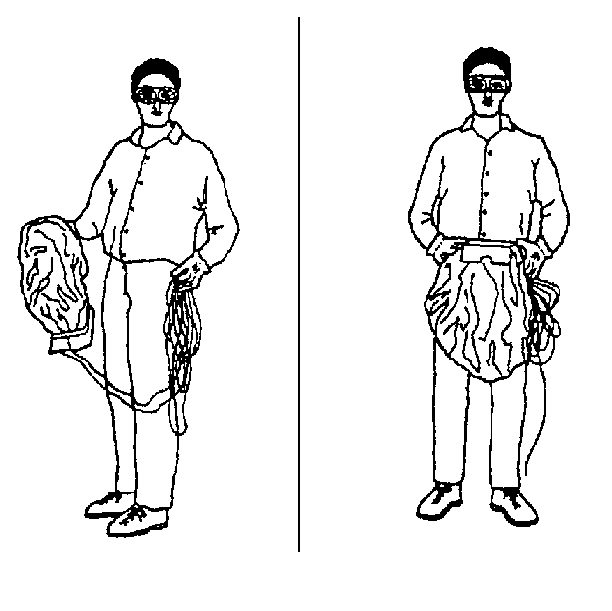
- Put on a pair of shop gloves.
- Disconnect the pigtail adapter from the inflator module as soon as possible.
- Dispose of the deployed inflator module through normal refuse channels.
- Wash hands with a mild soap.
Deployment Inside Vehicle (Vehicle Scrapping Procedure)
Deploy the inflator modules inside of the vehicle when destroying the vehicle
or when salvaging the vehicle for parts. This includes, but is not limited to, the
following situations:
| • | The vehicle has completed a useful life. |
| • | Irreparable damage occurs to the vehicle in a non-deployment type accident. |
| • | Irreparable damage occurs to the vehicle during a theft. |
| • | The vehicle is being salvaged for parts to be used on a vehicle with a
different VIN as opposed to rebuilding as the same VIN. |
Caution: Refer to SIR Inflatable Module Deployment Outside Vehicle Caution in the Preface section.
- Turn OFF the ignition.
- Remove the ignition key.
- Put on safety glasses.
- Remove all loose objects from the front seats.
- Disable the SIR system. Refer to
SIR Disabling and Enabling
.
Caution: A deployed dual stage inflator module will look the same whether one or both
stages were used, always assume a deployed dual stage inflator module has an active
stage 2. Improper handling or servicing can activate the inflator module and cause
personal injury.
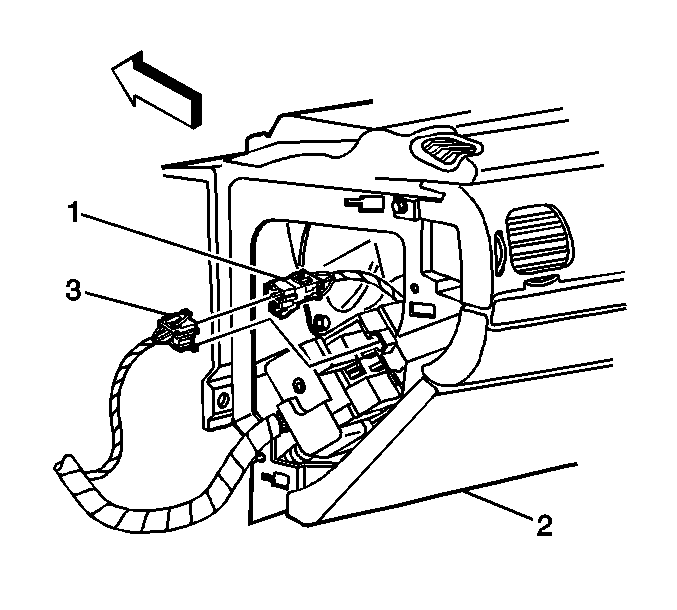
- Disconnect the steering
wheel module yellow connector (1) from vehicle harness yellow connector (3).
Important: Vehicle is equipped with dual stage air bags the steering wheel module and
I/P module will each have 4 wires. Refer to
SIR Connector End Views
for
determining high and low circuits.
- Cut the yellow harness connector out of the vehicle, leaving at least 16 cm
(6 in) of wire at the connector.
- Strip 13 mm (0.5 in) of insulation from each of the connector
wire leads.
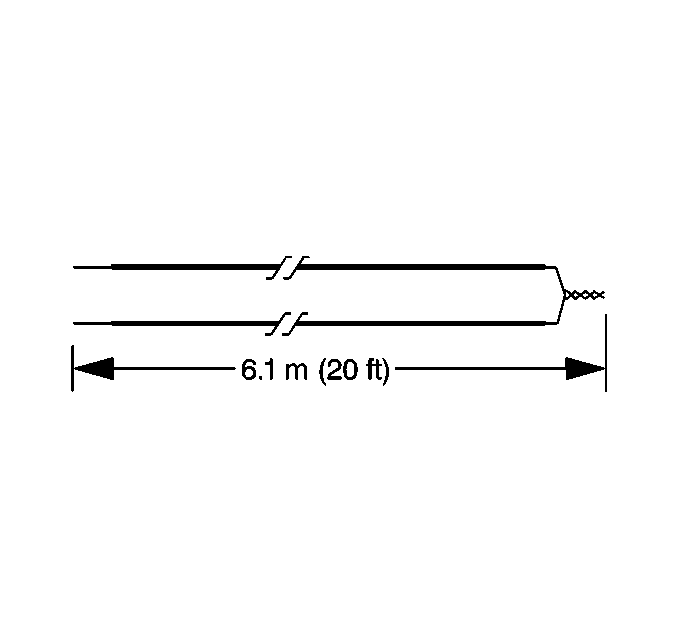
- Cut two 6.1 m (20 ft) deployment
wires from a 0.8 mm (18 gage) or thicker multi-strand wire. Use these
wires to fabricate the driver deployment harness.
- Strip 13 mm (0.5 in) of insulation from both ends of the
wires cut in the previous step.
- Twist together one end from each of the wires in order to short the wires.
Deployment wires shall remain shorted, and not connected to a power source until
you are ready to deploy the inflator module.

- Twist together two connector wire leads (the
high circuits from both stages of the steering wheel module) to one sets of deployment
wires. Refer to
SIR Connector End Views
in order to determine the correct circuits.
- Inspect that the 3 wire connection is secure.
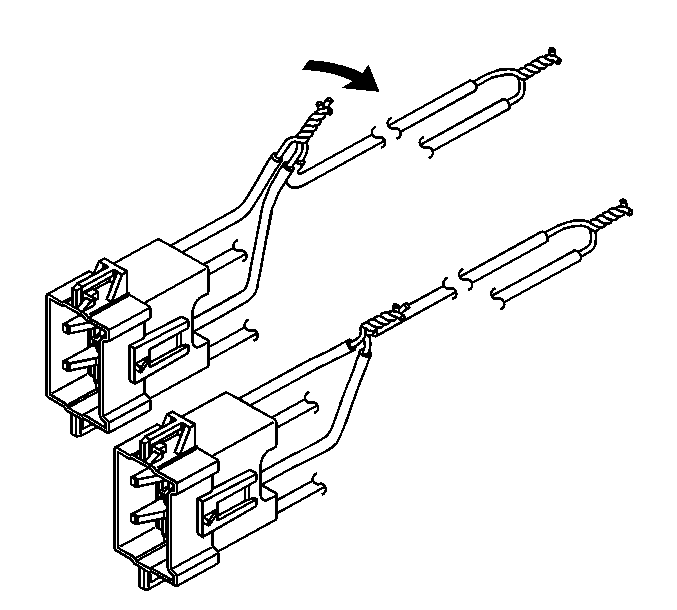
- Bend flat the twisted connection.
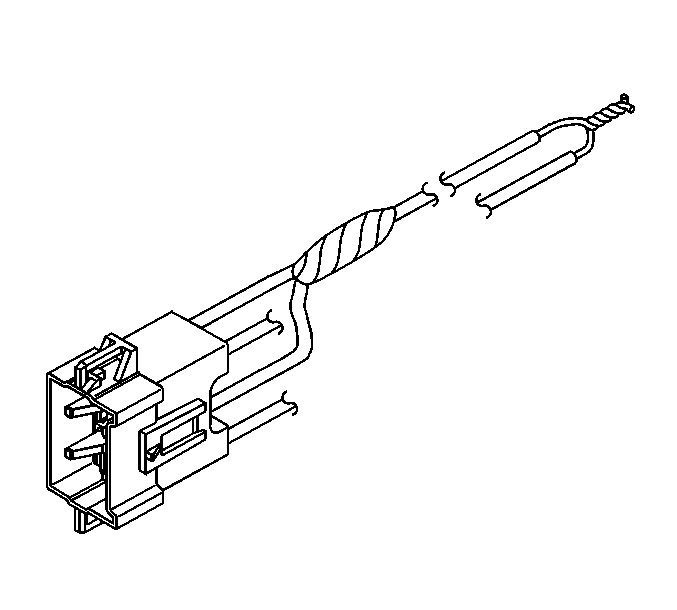
- Secure and insulate the 3 wire connection
to deployment harness using electrical tape.
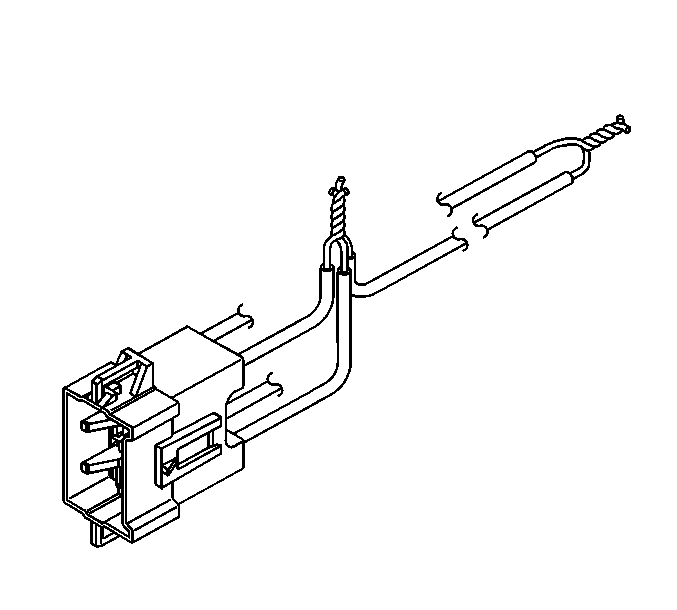
- Twist together two connector wire leads (the
low circuits from both stages of the steering wheel module) to one sets of deployment
wires. Refer to
SIR Connector End Views
in order to determine the correct circuits.
- Inspect that the 3 wire connection is secure.
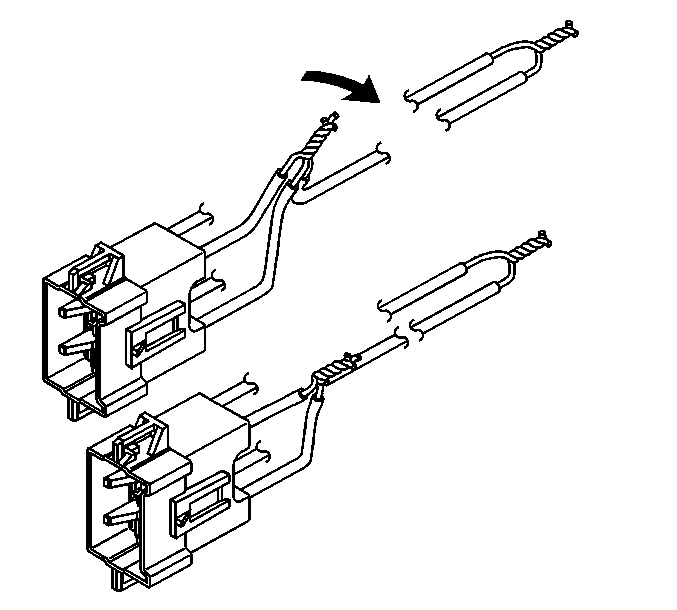
- Bend flat the twisted connection.
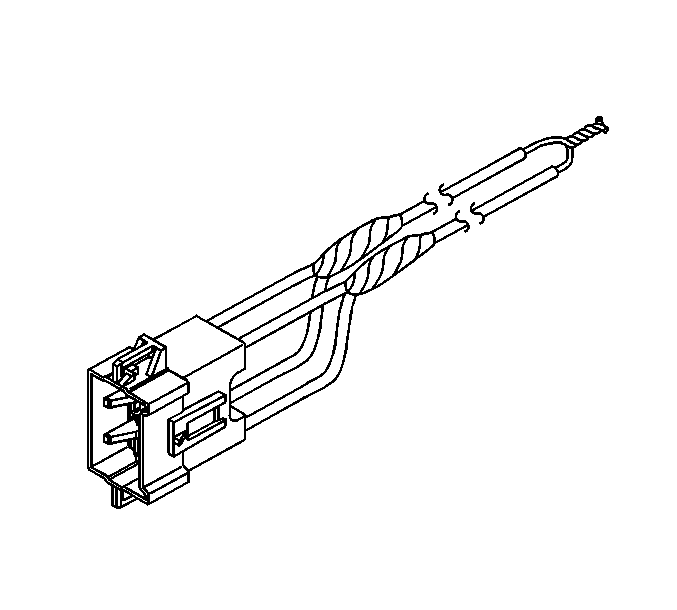
- Secure and insulate the 3 wire connection
to deployment harness using electrical tape.
- Connect the deployment harness to the steering wheel module in-line
connector.
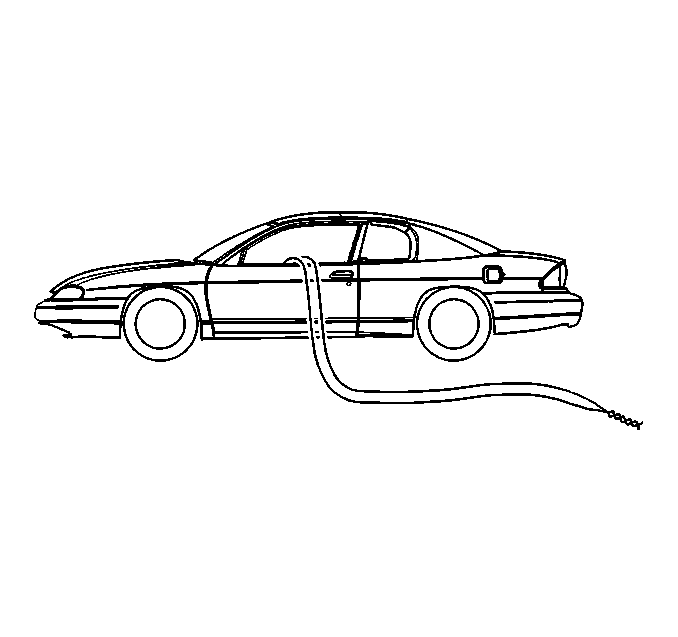
- Route the deployment harness out of the driver
side of the vehicle.
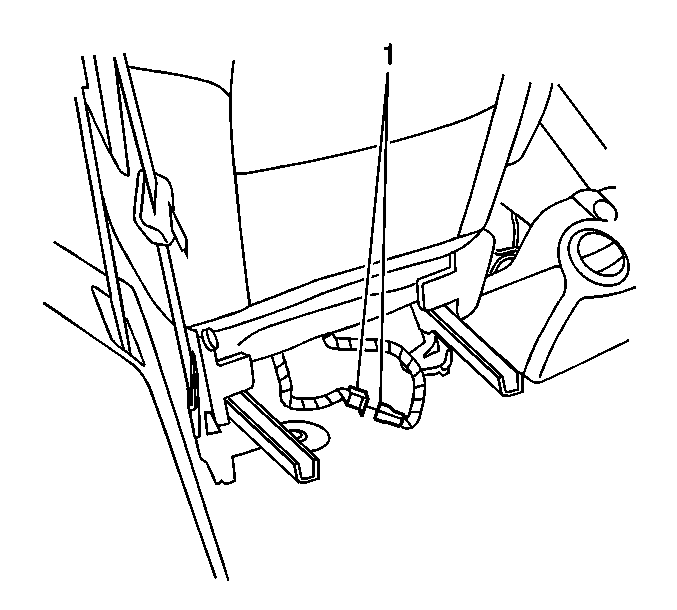
- Disconnect the driver/left seat belt pretensioner
yellow connector (1) from the vehicle wiring harness located under the rear
of driver seat.

- Cut the harness connector out of the vehicle,
leaving at least 16 cm (6 in) of wire at the connector.
- Strip 13 mm (0.5 in) of insulation from each of the connector
wire leads.

- Cut two 6.1 m (20 ft) deployment
wires from a 0.8 mm (18 gage) or thicker multi-strand wire. These
wires will be used to fabricate the left seat belt pretensioner deployment harness.
- Strip 13 mm (0.5 in) of insulation from both ends of the
wires cut in the previous step.
- Twist together one end from each of the wires in order to short the wires.
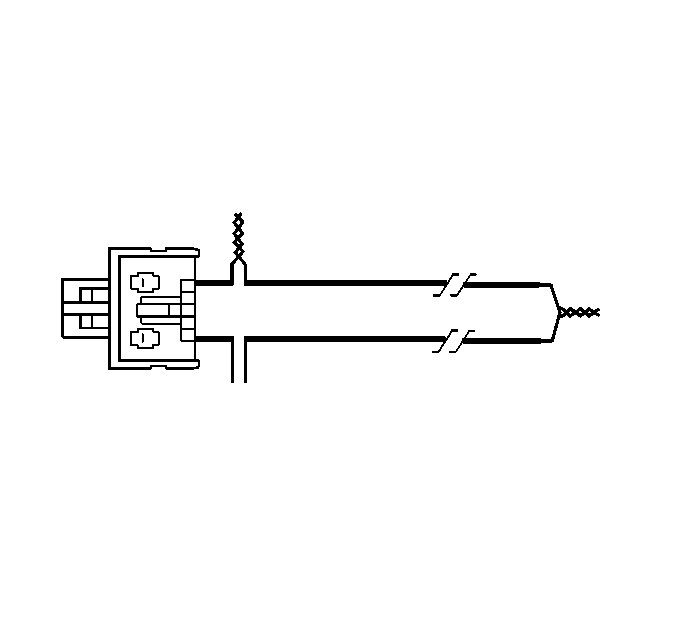
- Twist together one connector wire lead to one
deployment wire.
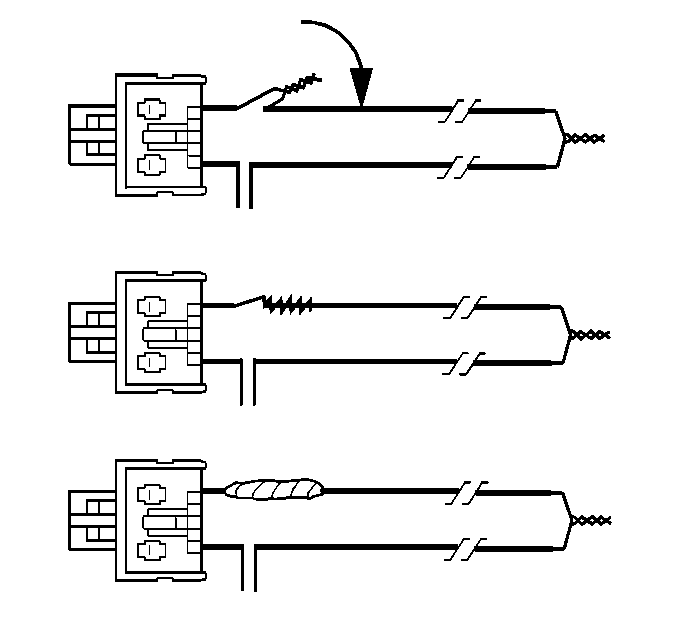
- Bend flat the twisted connection.
- Secure and insulate the connection using electrical tape.
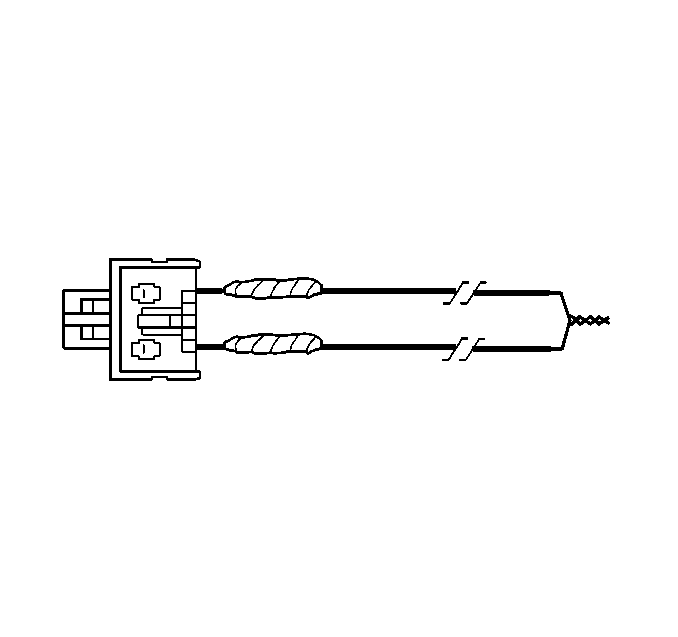
- Twist together, bend, and tape the remaining
connector wire lead to the remaining deployment wire.
- Connect the deployment harness to the left seat belt pretensioner yellow
connector.
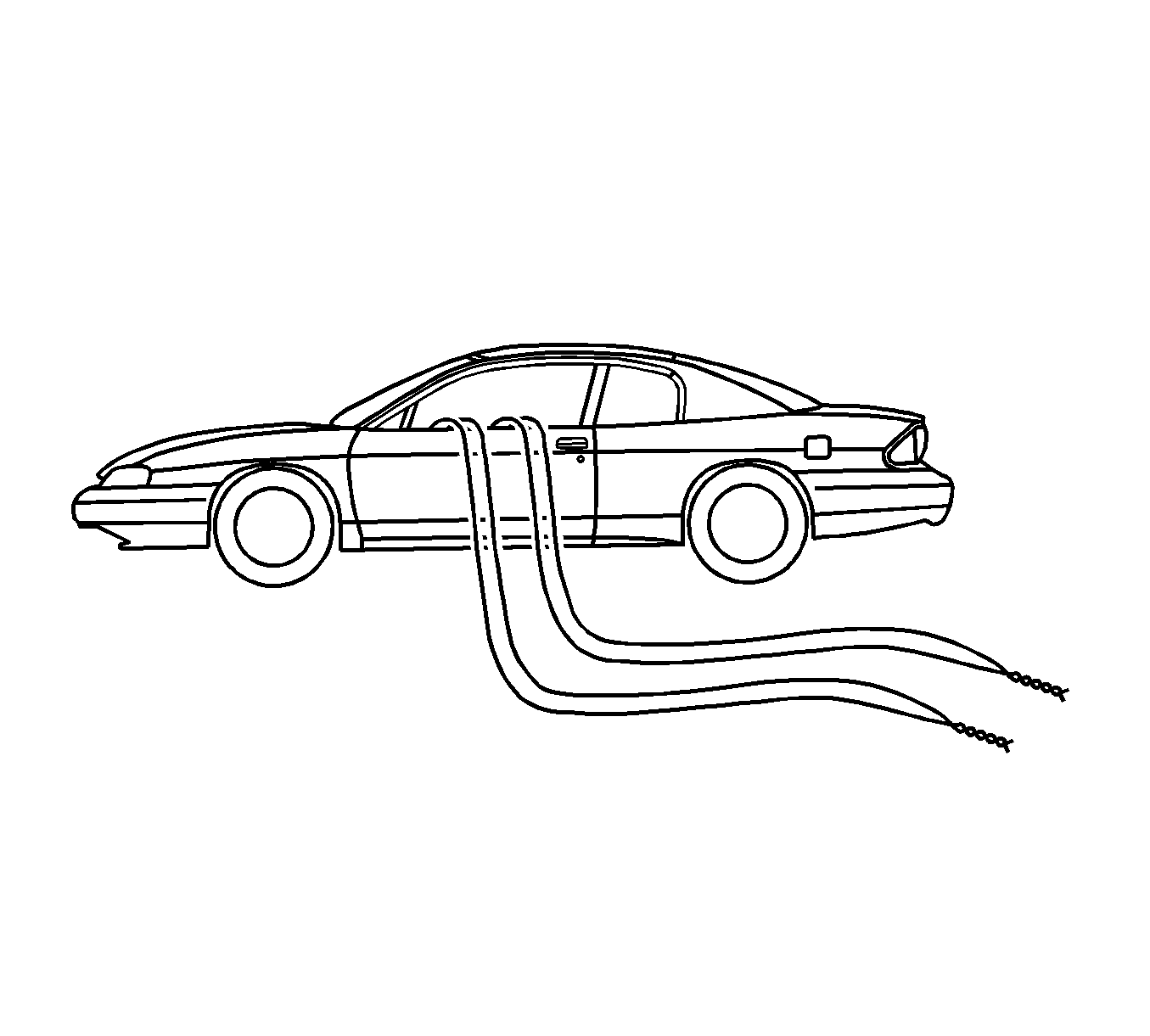
- Route the deployment harness out of the driver
side of the vehicle.
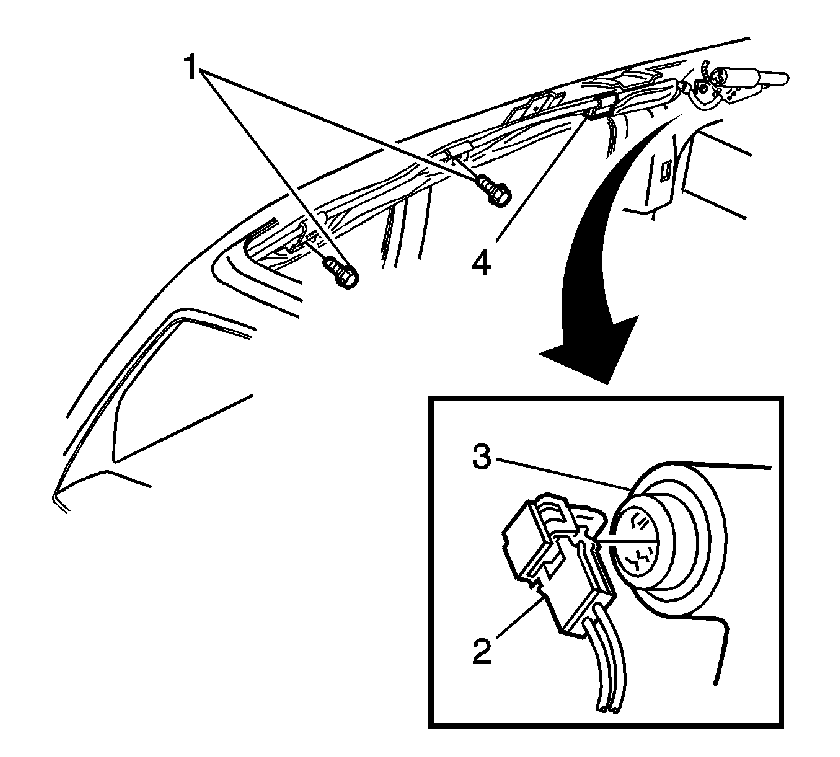
- Disconnect the left/driver roof rail module yellow
harness connector (2).

- Cut the harness connector out of the vehicle,
leaving at least 16 cm (6 in) of wire at the connector.
- Strip 13 mm (0.5 in) of insulation from each of the connector
wire leads.

- Cut two 6.1 m (20 ft) deployment
wires from a 0.8 mm (18 gage) or thicker multi-strand wire. These
wires will be used to fabricate the roof rail module deployment harness.
- Strip 13 mm (0.5 in) of insulation from both ends of the
wires cut in the previous step.
- Twist together one end from each of the wires in order to short the wires.

- Twist together one connector wire lead to one
deployment wire.

- Bend flat the twisted connection.
- Secure and insulate the connection using electrical tape.

- Twist together, bend, and tape the remaining
connector wire lead to the remaining deployment wire.
- Connect the deployment harness to the roof rail module.
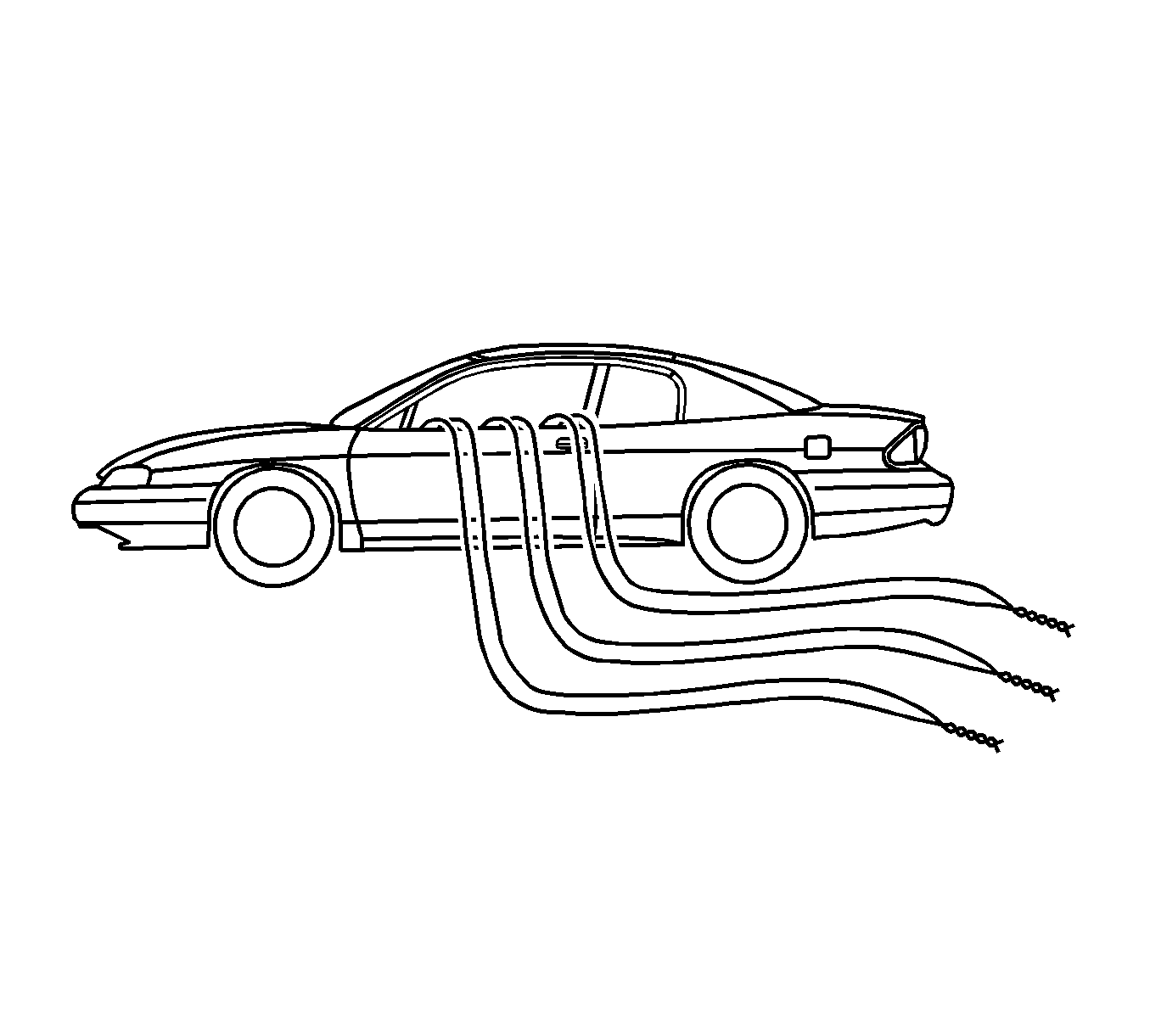
- Route the deployment harness out of the driver
side of the vehicle.
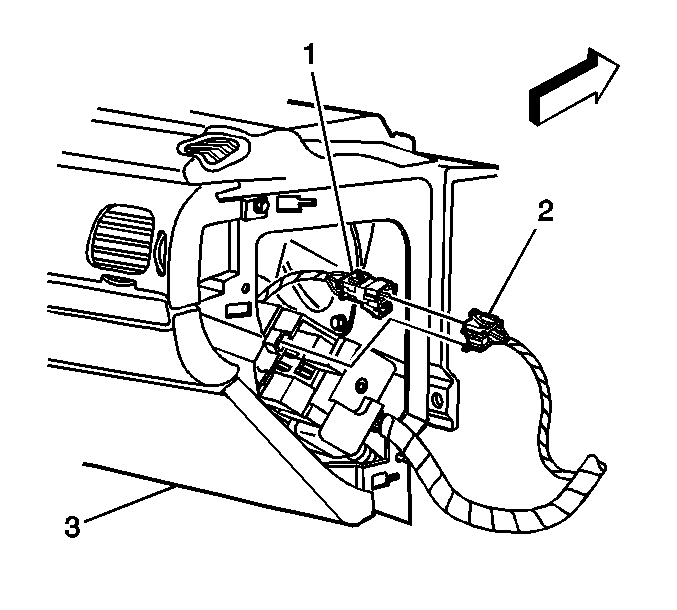
- Disconnect the I/P module yellow harness connector (1)
from the vehicle harness connector (2).
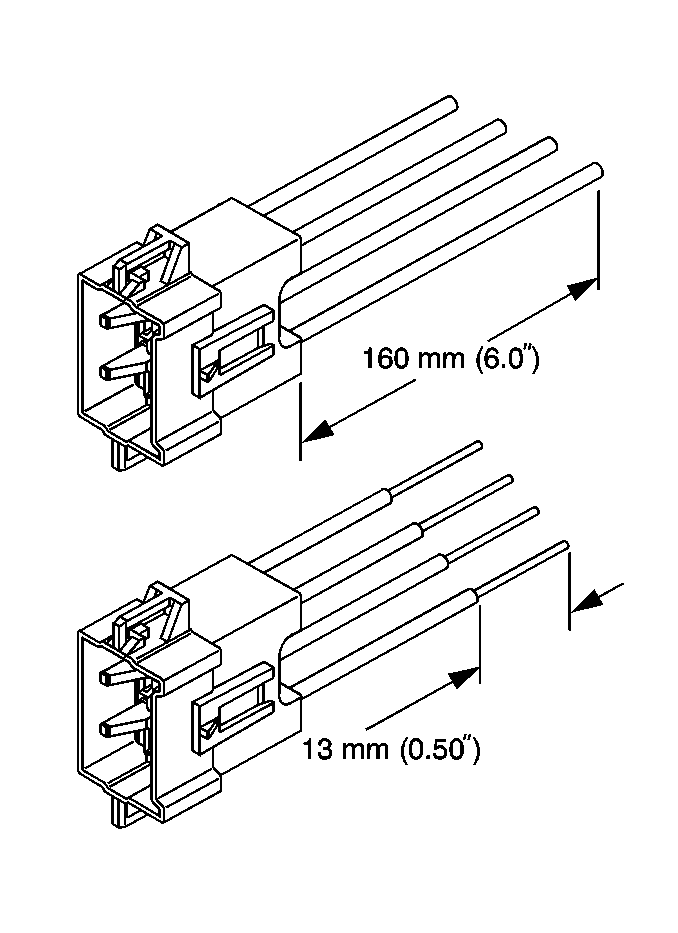
Important: Vehicle is equipped with dual stage air bags the I/P module will each have
4 wires. Refer to
SIR Connector End Views
for determining high and low
circuits.
- Cut the yellow harness connector out of the vehicle, leaving at least 16 cm
(6 in) of wire at the connector.
- Strip 13 mm (0.5 in) of insulation from each of the connector
wire leads.

- Cut two 6.1 m (20 ft) deployment
wires from a 0.8 mm (18 gage) or thicker multi-strand wire. These
wires will be used to fabricate the IP module deployment harness.
- Strip 13 mm (0.5 in) of insulation from both ends of the
wires cut in the previous step.
- Twist together one end from each of the wires in order to short the wires.

- Twist together two connector wire leads (the
high circuits from both stages of the steering wheel module) to one sets of deployment
wires. Refer to
SIR Connector End Views
in order to determine the correct circuits.
- Inspect that the 3 wire connection is secure.

- Bend flat the twisted connection.

- Secure and insulate the 3 wire connection
to deployment harness using electrical tape.

- Twist together 2 connector wire leads (the
low circuits from both stages of the steering wheel module) to one sets of deployment
wires. Refer to
SIR Connector End Views
in order to determine the correct circuits.
- Inspect that the 3 wire connection is secure.

- Bend flat the twisted connection.

- Secure and insulate the 3 wire connection
to deployment harness using electrical tape.
- Connect the deployment harness to the I/P module in-line connector.
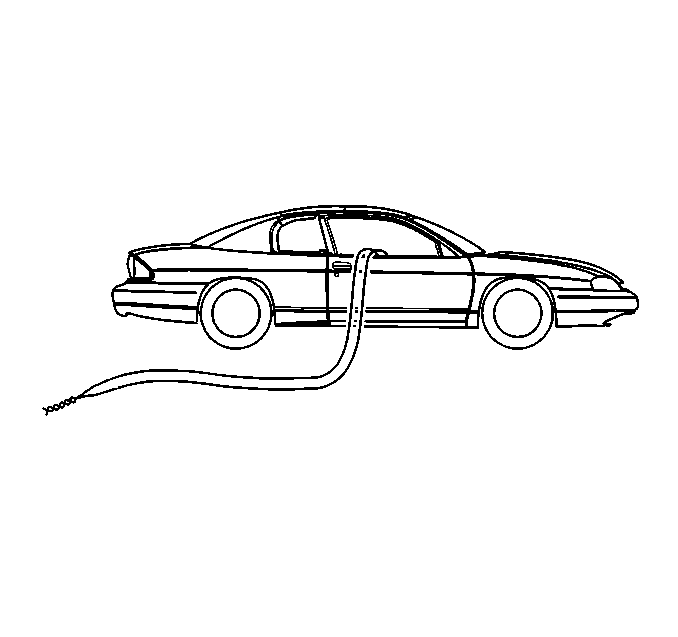
- Route the deployment harness out of the passenger
side of the vehicle.

- Disconnect the passenger/right seat belt pretensioner
yellow connector (1) from the vehicle wiring harness located under the rear
of passenger seat.

- Cut the harness connector out of the vehicle,
leaving at least 16 cm (6 in) of wire at the connector.
- Strip 13 mm (0.5 in) of insulation from each of the connector
wire leads.

- Cut two 6.1 m (20 ft) deployment
wires from a 0.8 mm (18 gage) or thicker multi-strand wire. These
wires will be used to fabricate the right seat belt pretensioner deployment harness.
- Strip 13 mm (0.5 in) of insulation from both ends of the
wires cut in the previous step.
- Twist together one end from each of the wires in order to short the wires.

- Twist together one connector wire lead to one
deployment wire.

- Bend flat the twisted connection.
- Secure and insulate the connection using electrical tape.

- Twist together, bend, and tape the remaining
connector wire lead to the remaining deployment wire.
- Connect the deployment harness to the right seat belt pretensioner yellow
connector.
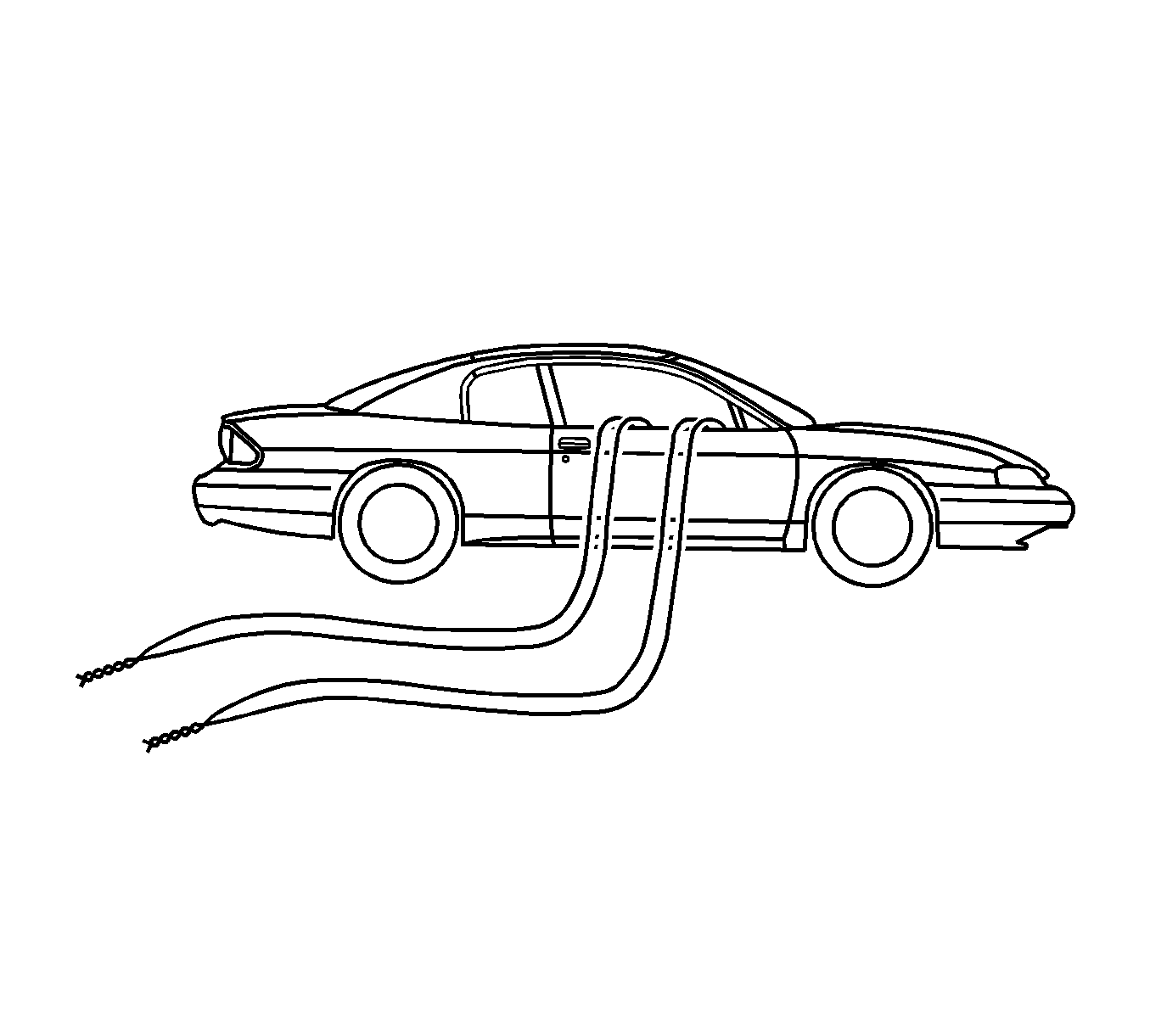
- Route the deployment harness out of the passenger
side of the vehicle.

- Disconnect the right/passenger roof rail module
yellow harness connector (2).

- Cut the harness connector out of the vehicle,
leaving at least 16 cm (6 in) of wire at the connector.
- Strip 13 mm (0.5 in) of insulation from each of the connector
wire leads.

- Cut two 6.1 m (20 ft) deployment
wires from a 0.8 mm (18 gage) or thicker multi-strand wire. These
wires will be used to fabricate the roof rail module deployment harness.
- Strip 13 mm (0.5 in) of insulation from both ends of the
wires cut in the previous step.
- Twist together one end from each of the wires in order to short the wires.

- Twist together one connector wire lead to one
deployment wire.

- Bend flat the twisted connection.
- Secure and insulate the connection using electrical tape.

- Twist together, bend, and tape the remaining
connector wire lead to the remaining deployment wire.
- Connect the deployment harness to the roof rail module.
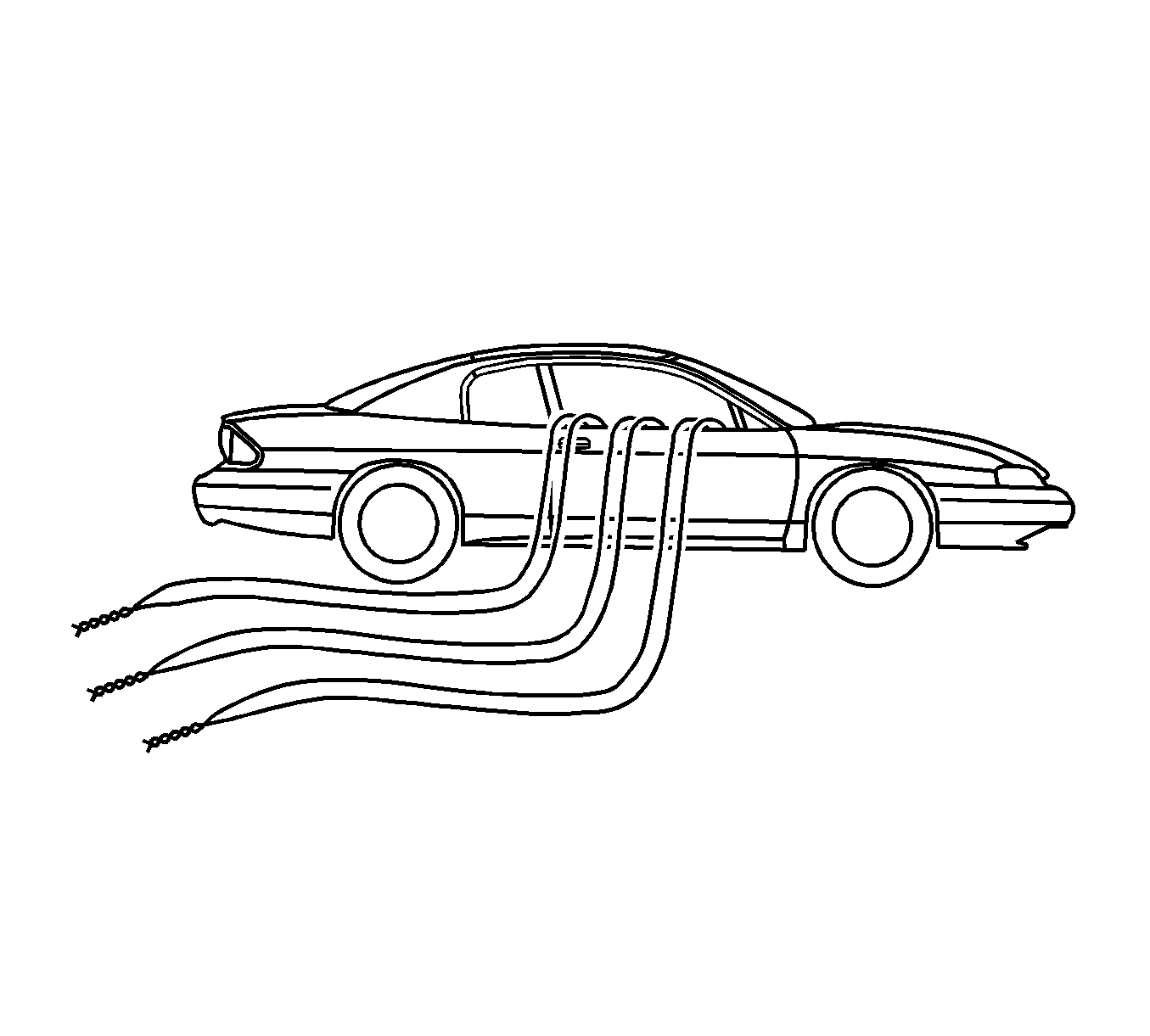
- Route the deployment harness out of the passenger
side of the vehicle.
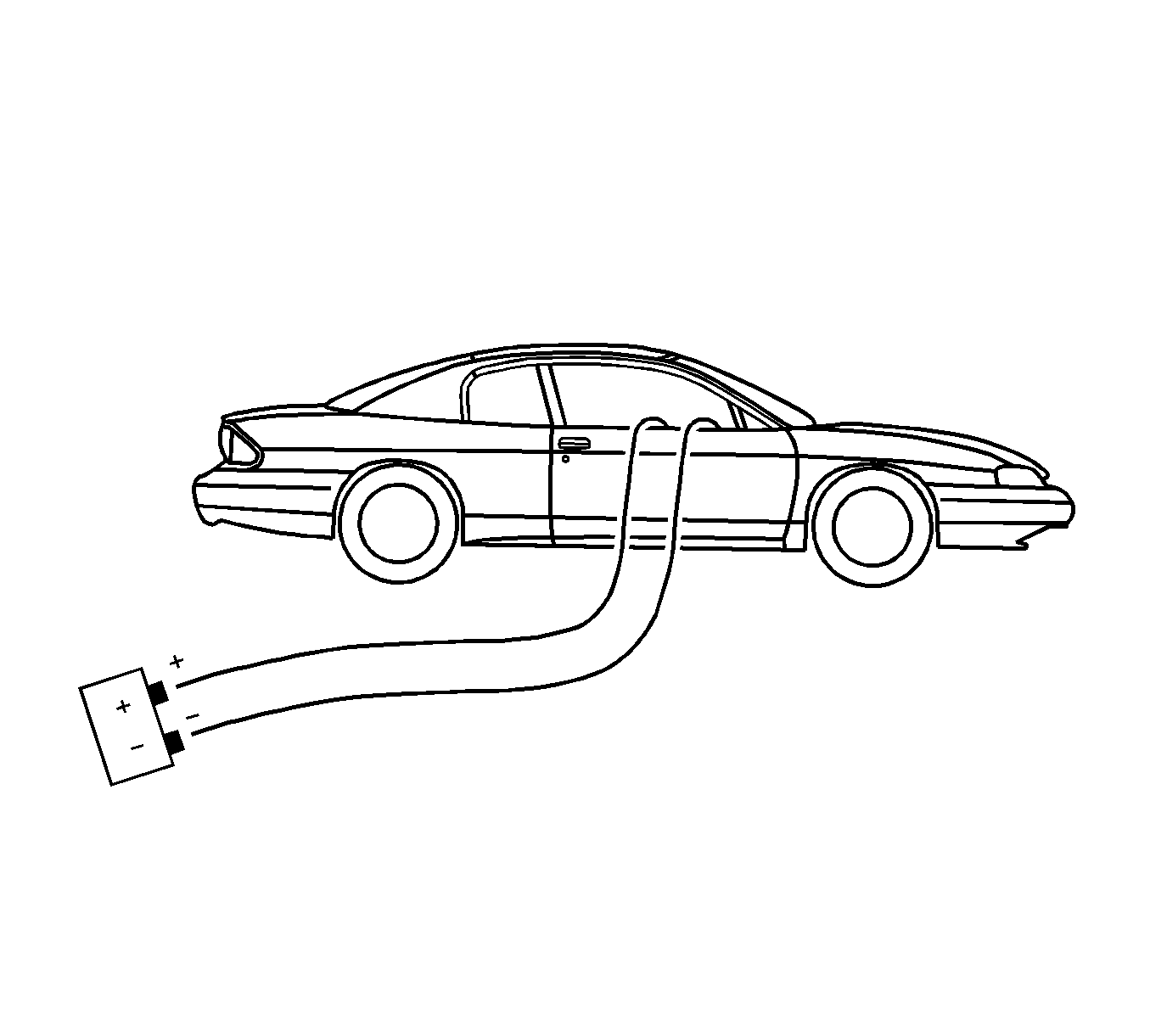
- Completely cover the windshield and front door
window openings with a drop cloth.
- Stretch out all of the deployment harness wires on the right side of the
vehicle to their full length.
- Deploy each deployment loop one at a time.
- Place a power source, 12 V minimum/2 A minimum (i.e.,
a vehicle battery) near the shorted end of the harnesses.
- Separate the one set of wires and touch the wires ends to the power source
in order to deploy the inflator modules, doing one module at a time.
- Disconnect the deployment harness from the power source and twist the
wire ends together.
- Continue the same process with the remaining deployment harnesses that
are available.

- Stretch out all of the deployment harness wires
on the left side of the vehicle to their full length.
- Deploy each deployment loop one at a time.
- Place a power source, 12 V minimum/2 A minimum
(i.e., a vehicle battery) near the shorted end of the harnesses.
- Separate the one set of wires and touch the wires ends to the power source
in order to deploy the inflator modules, doing one module at a time.
- Disconnect the deployment harness from the power source and twist the
wire ends together.
- Continue the same process with the remaining deployment harnesses that
are available.
- Remove the drop cloth from the vehicle.
- Disconnect all harnesses from the vehicle.
- Discard the harnesses.
- Scrap the vehicle in the same manner as a non-SIR equipped vehicle.
- If one or all of the inflator modules did not deploy, perform the following
steps to remove the undeployed module(s) from the vehicle:





























































